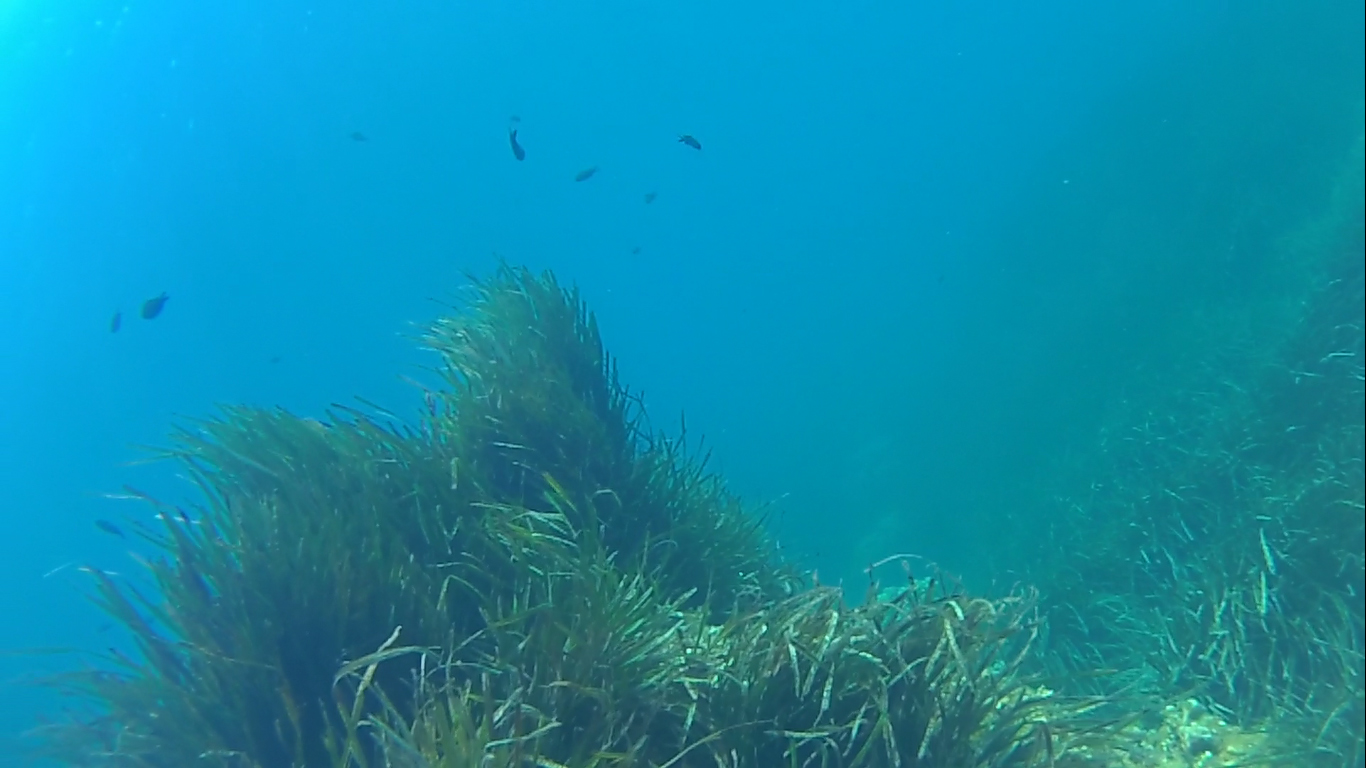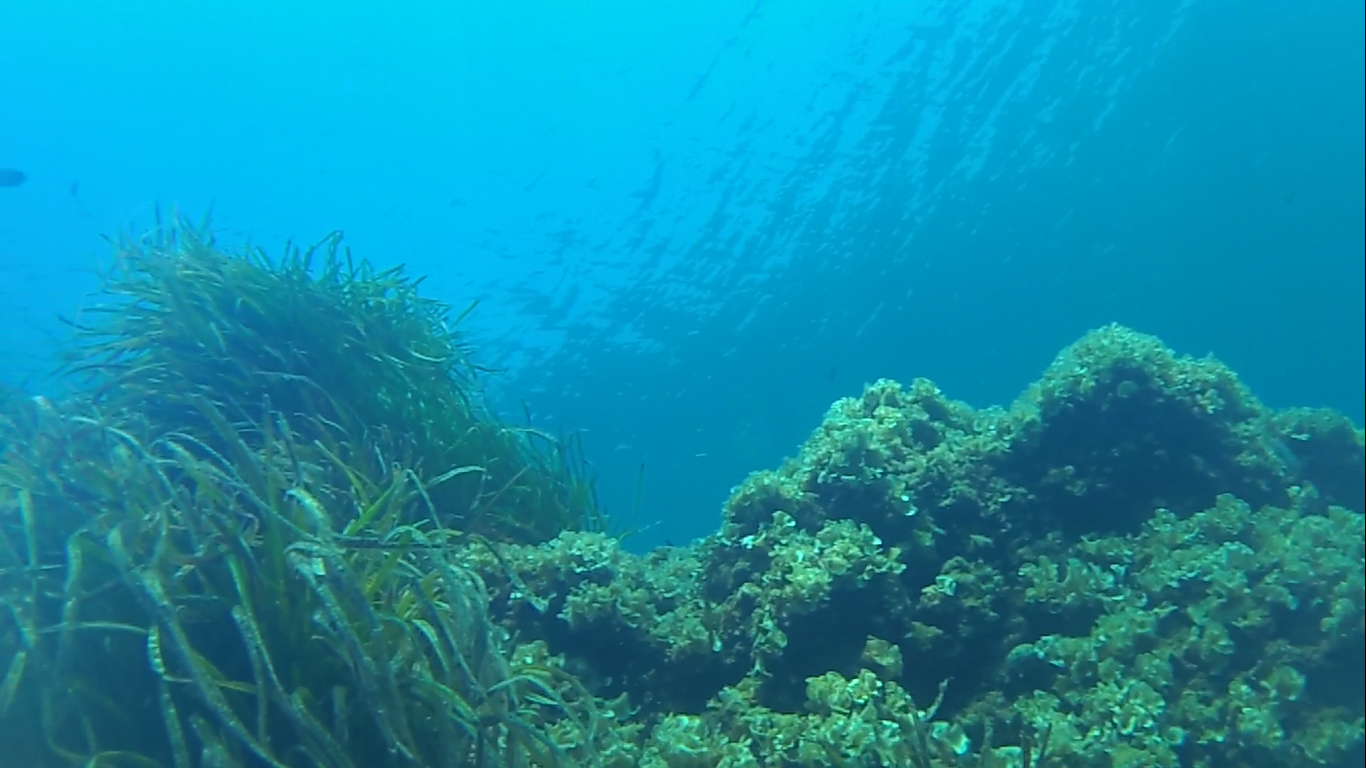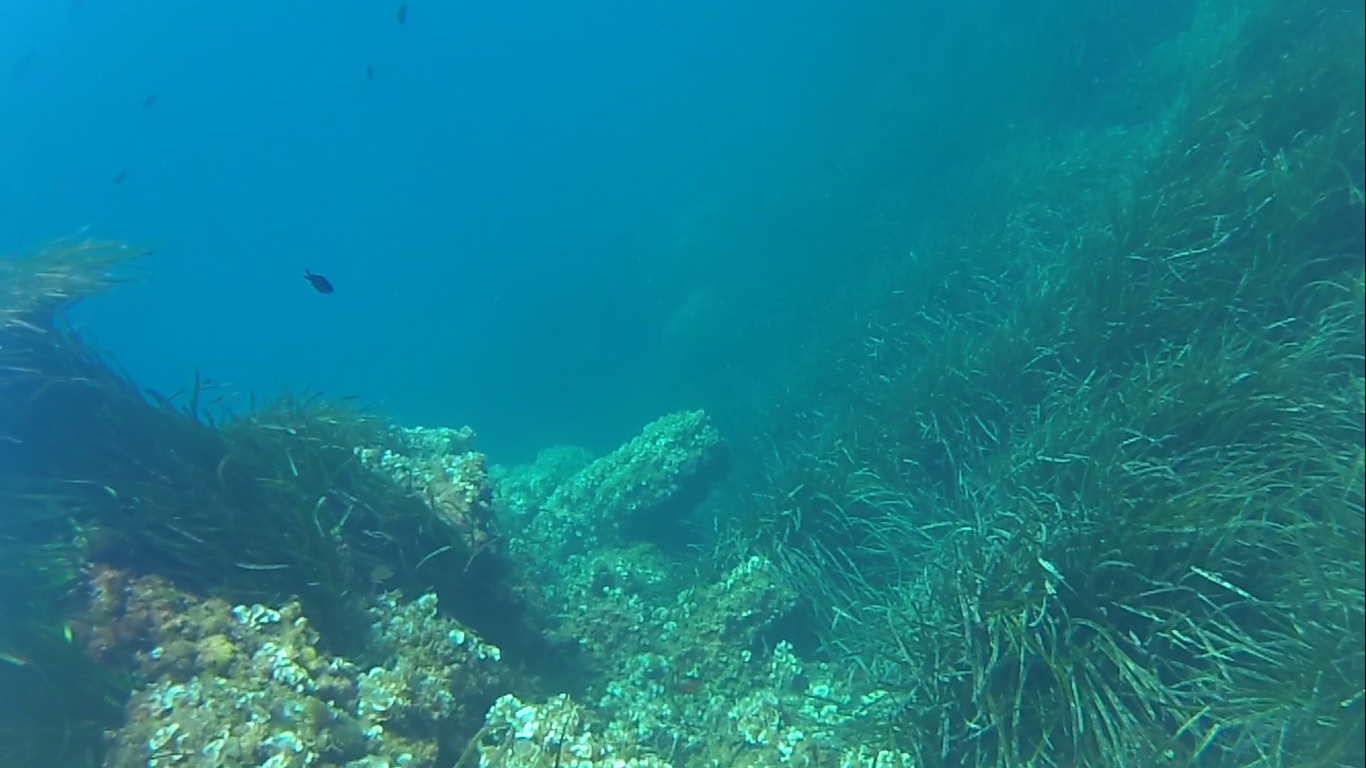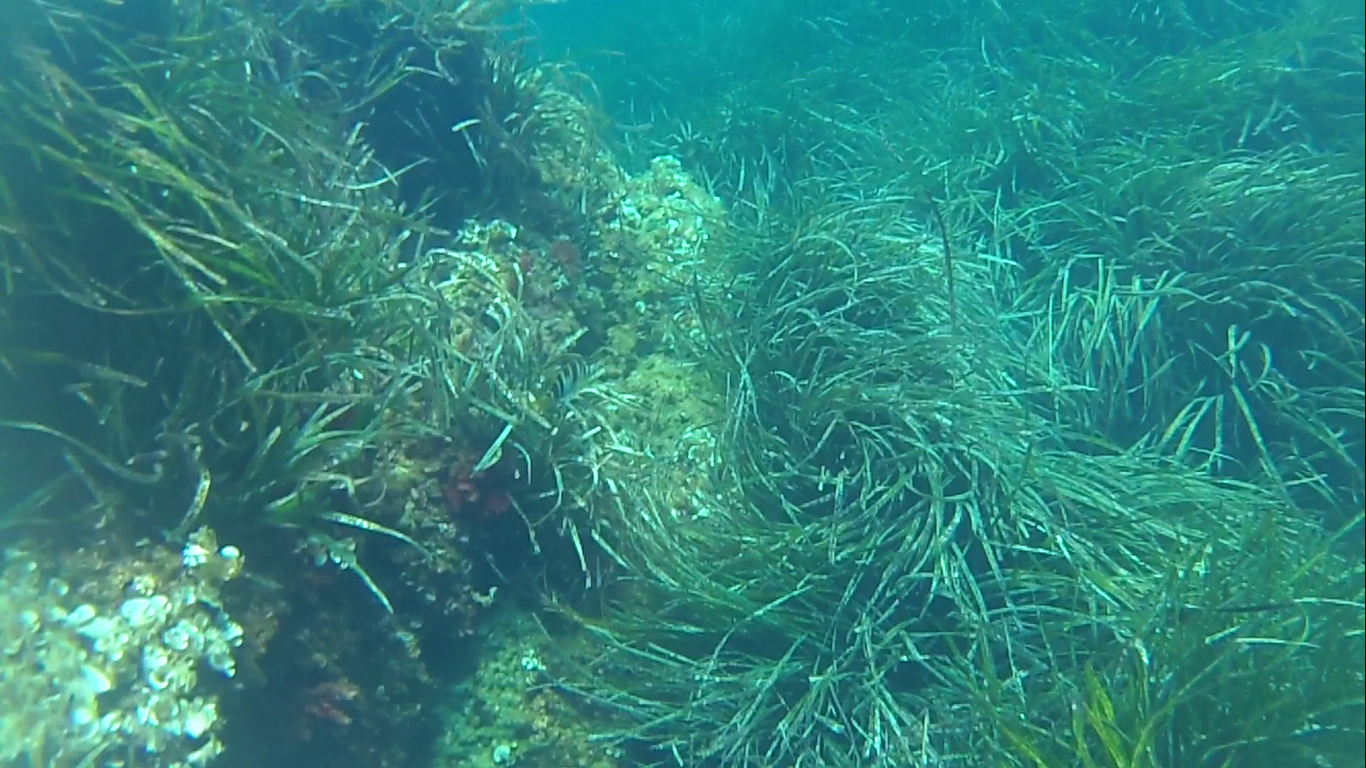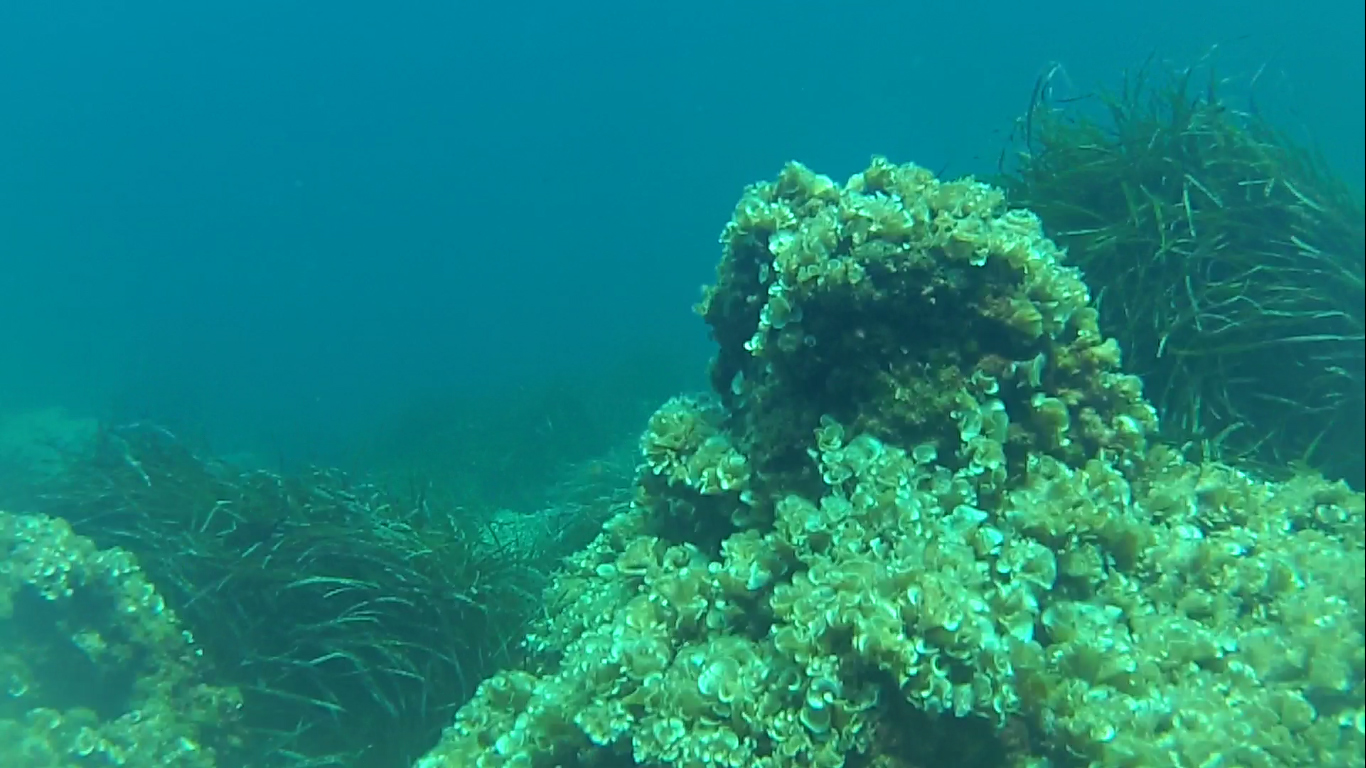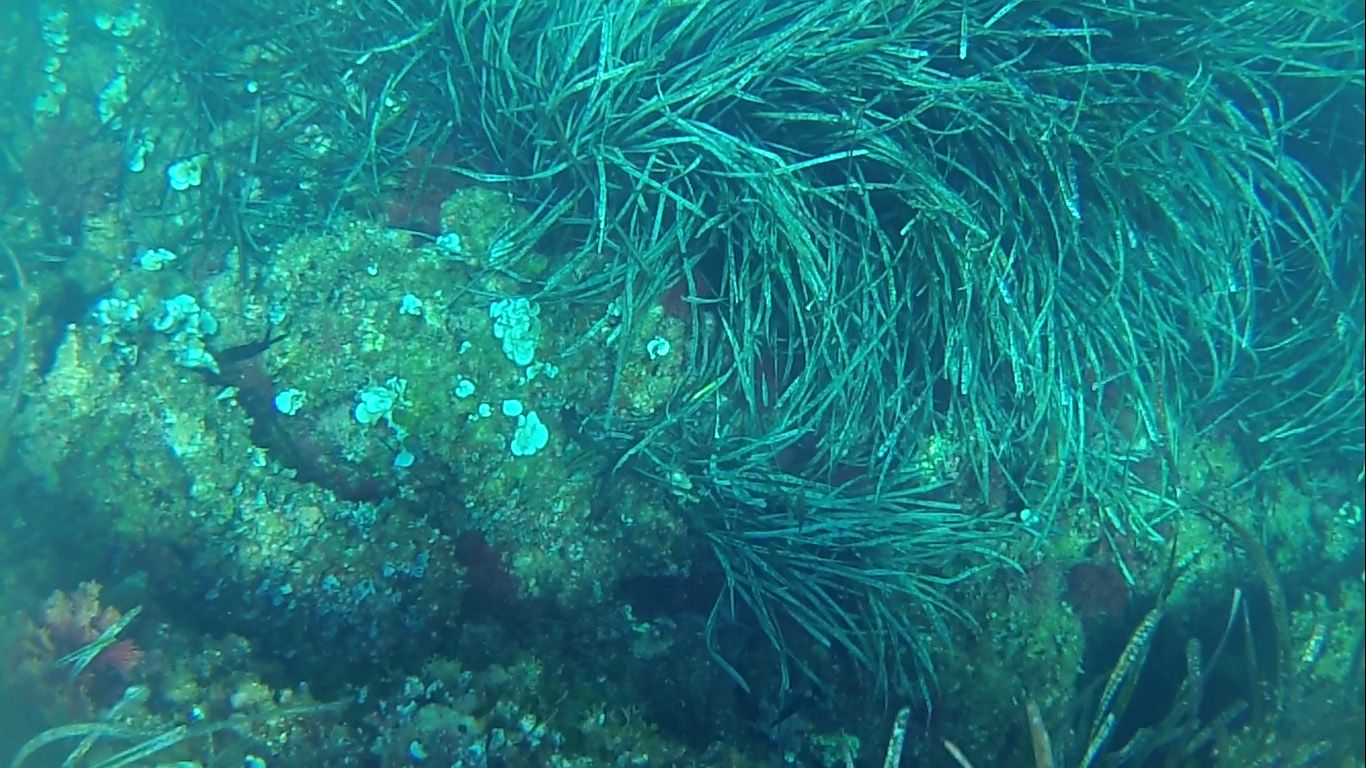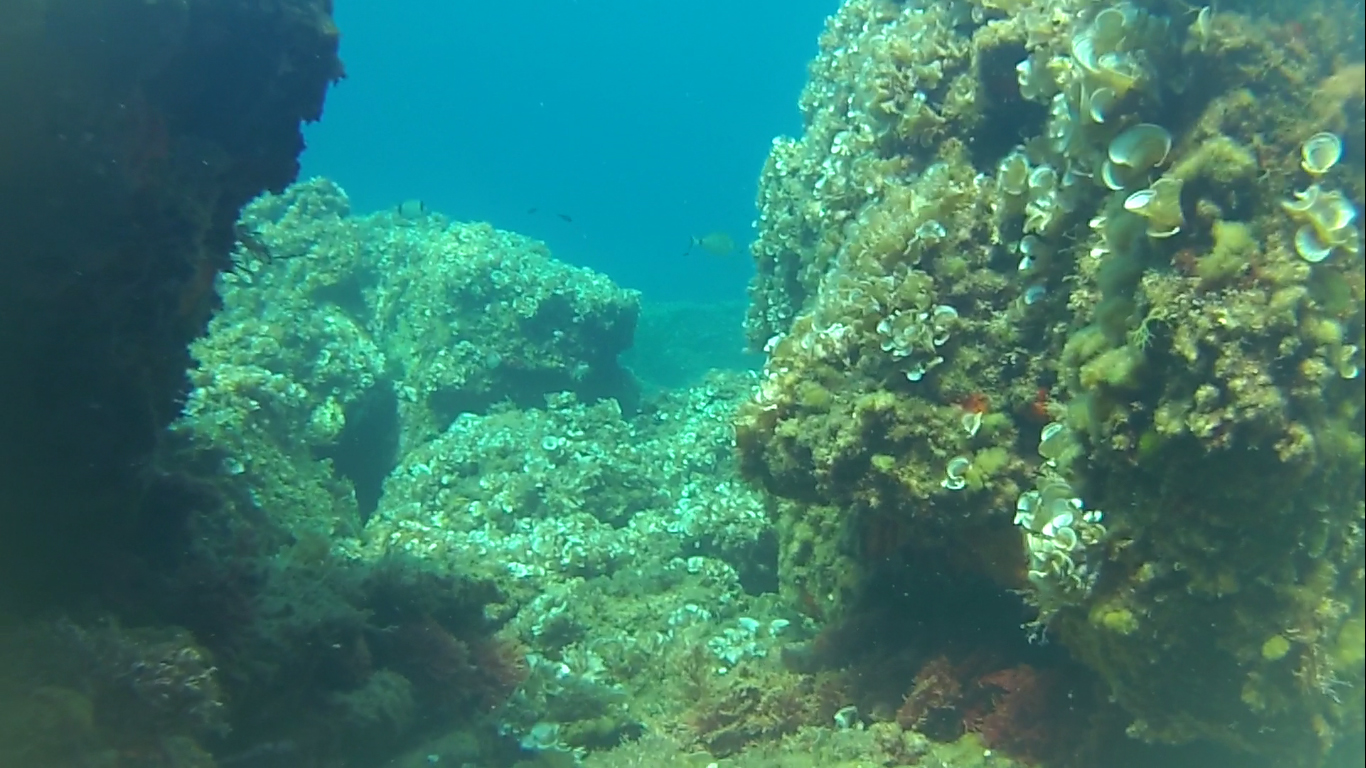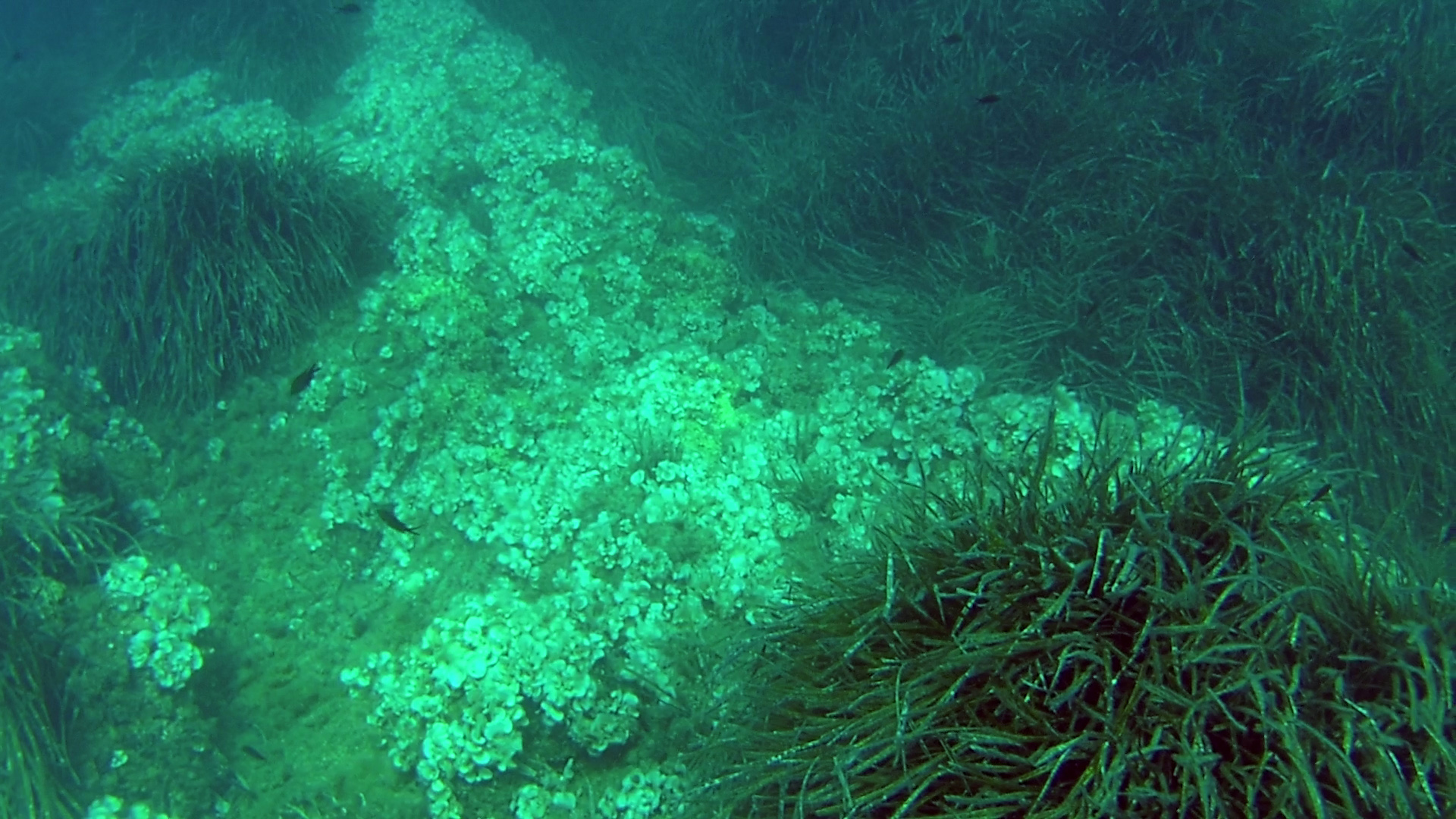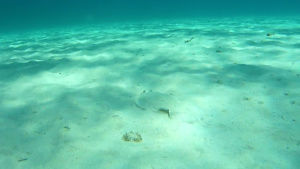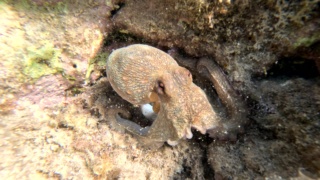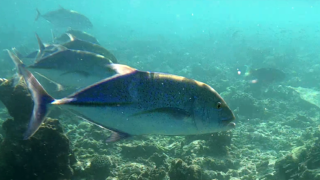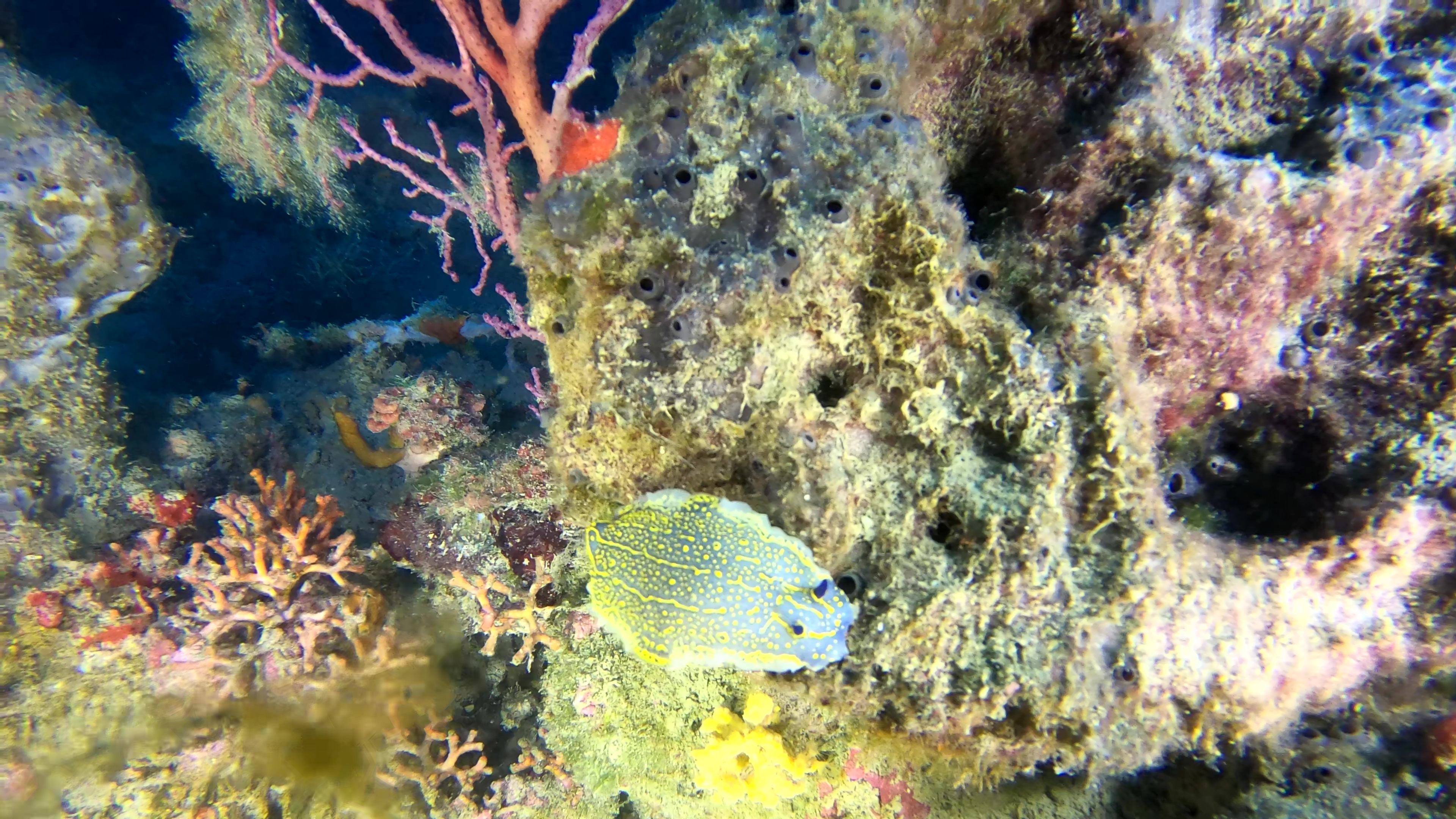Posidonia (L.) Delila, 1813 is an aquatic plant, endemic to the Mediterranean Sea, belonging to the family Posidoniacee (Angiosperms Monocotyledons). It has features similar to terrestrial plants, has roots, a rhizomatous stem and leaves up to a meter long ribbon and united in tufts of 6-7. It blooms in autumn and in spring produces floating fruits commonly called “sea olives”. Shape of the underwater meadows that have considerable ecological importance, constituting the climax community of the Mediterranean Sea and exerting a significant action in the protection of the line of coastline from erosion. Inside live many animal and plant organisms that are the Prairie nourishment and protection. The posidonieto is considered a good bio-indicator of the quality of coastal marine waters. Posidonia Oceanica intotheblue.it
This species is found only in the Mediterranean Sea where it is in decline, occupying an area of about 3% of the basin. This corresponds to a surface area of about 38,000 square kilometres (15,000 sq mi). Posidonia grows best in clean waters, and its presence is a marker for lack of pollution. The presence of Posidonia can be detected by the masses of decomposing leaves on beaches. Such plant material has been used for composting, but Italian laws prohibit the use of marine algae and plants for this purpose.
The vertical growth of the rhizomes leads to the formation of a structure called Mat, consisting of a tangle of dead rhizomes and roots among which the sediment remains trapped. Only the top part of these structures is formed by live plants. The formation of the Mat depends mostly on sedimentation rates. A high sedimentation rate can lead to excessive silting of the rhizomes and therefore to their suffocation; On the contrary, too slow a sedimentation can lead to the lifting of the rhizomes and the regression of the prairie. Because the rate of decay of the rhizomes is very slow they can remain within the wild even for millennia.
The growth of the Matta has been estimated by many scholars in about 1 m per century. When the plant of Posidonia, due to pollution, to climate change or to reasons that we do not know, dies leavis only the rhizomes and this phenomenon contributes to the erosion of the beaches. The Posidonia prairie is in fact a natural barrier to coastal erosion.
It happens more and more often to be found on the shorelineof spherical agglomerates similar to tennis balls, light brown feltrosa consistency these are due to the intertwining of fraying foliar residues fibrosis around the rhizome of the plant and their aggregation by the of the marine undertow. Posidonia Oceanica intotheblue.it
 English
English Italiano
Italiano
